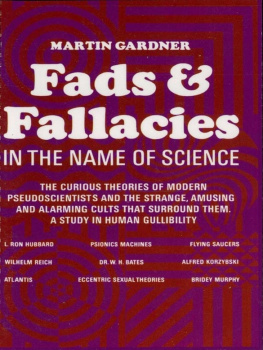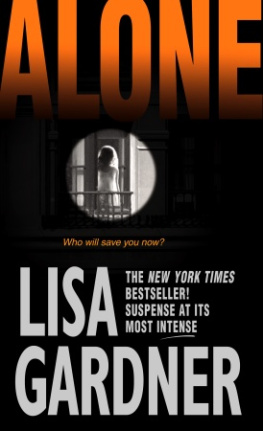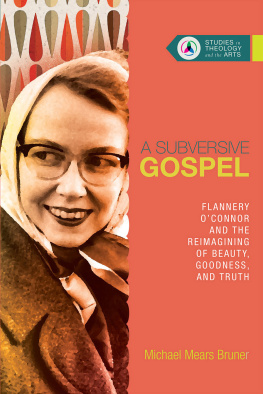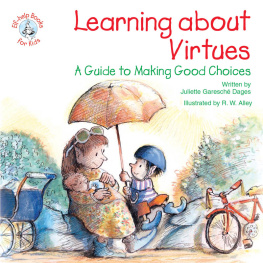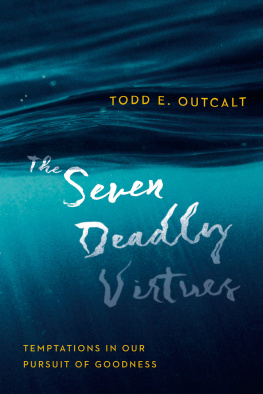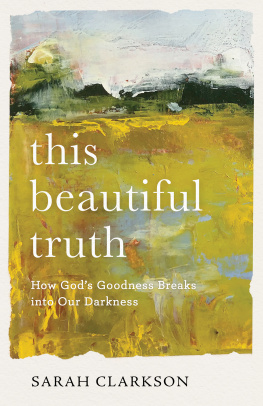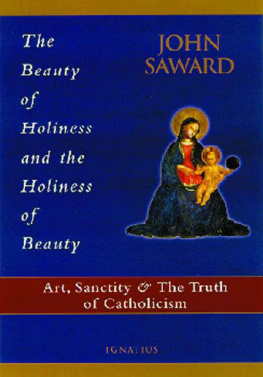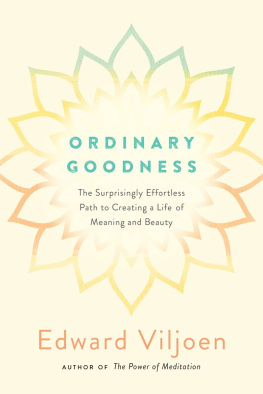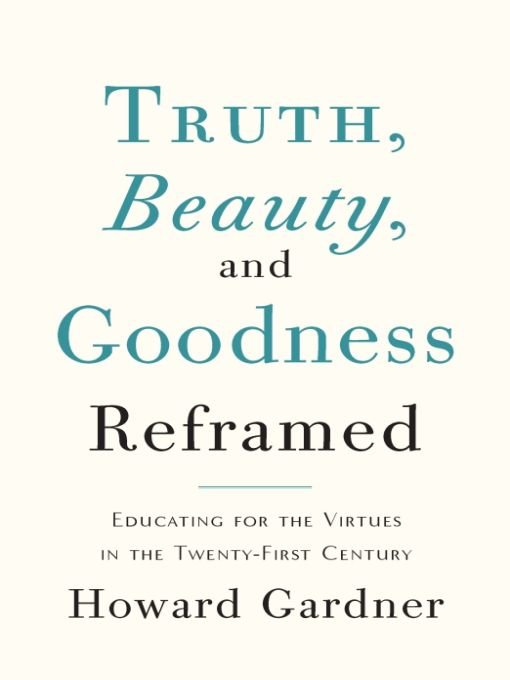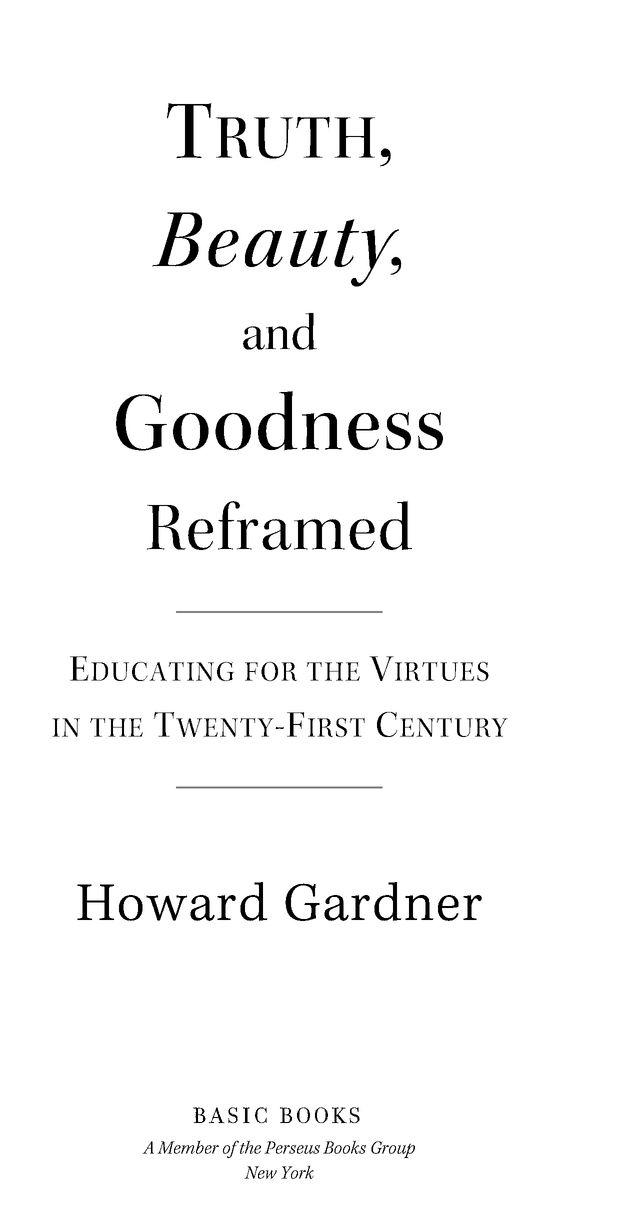Table of Contents
Advance Praise for Howard Gardners Truth, Beauty, and Goodness Reframed
This is a profound deepening of Gardners earlier work on the various forms of intelligence. He now sees our ways of understanding the world as operating in, as it were, symphonic relations to each other, yielding the rich diversity that characterizes human thought in different cultural settings. This new book has a stunning freshness about it, a real leap forward. Bravo!
Jerome Bruner, University Professor, New York University,
and author of The Process of Education
With this bravely imaginative book, fearlessly striking out in regularly contested terrain, Gardner has definitely established himself, along with his pantheon of mentors, Erikson, Bruner and Piaget, as one of the top social scientists of his age. Starting with his ground-breaking Frames of Mind, his genius has been marinating and is now fully manifest in this marvelous book.
Warren Bennis, Distinguished Professor of Business and
University Professor, University of Southern California,
and author of Still Surprised: A Memoir of a Life in Leadership
This book is not merely informative, although it is surely that. It helps us understand and provokes us to think more deeply about some of the most important questions we face in trying to live a full and rewarding life.
Derek Bok, former president, Harvard University
ALSO BY HOWARD GARDNER
The Quest for Mind
The Arts and Human Development
The Shattered Mind
Developmental Psychology
Artful Scribbles
Art, Mind, and Brain
Frames of Mind
The Minds New Science
To Open Minds
Art Education and Human Development
The Unschooled Mind
Creating Minds
Leading Minds (with Emma Laskin)
Multiple Intelligences: The Theory in Practice
The Disciplined Mind
Intelligence Reframed
Good Work
(with Mihaly Csikszentmihalyi and William Damon)
Changing Minds
Multiple Intelligences: New Horizons
The Development and Education of the Mind
Five Minds for the Future
To my colleagues at the Museum of Modern Art
Preface
In 1904 Henry Adams, notable historian and member of arguably the most distinguished family in American history, published privately a lengthy (close to two-hundred-page), convoluted essay called Mont-Saint Michel and Chartres: A Study of Thirteenth-Century Unity. Adams felt inadequate to deal with the many transformations that had taken place since his birth in 1838the growth of cities, the rise of mass transportation, the influx of immigrants, the political assassinations, scientific breakthroughs such as Darwinism, and, above all, the new technologiesX-rays, radio, the automobile. Unlike his contemporary, the novelist Henry James, Adams did not turn his back on these unwelcome developments and move to Europe. Instead, he looked with nostalgia to a much earlier timeindeed, to Europe of the medieval era.
As he saw it, life in France in the eleventh and twelfth centuries represented an ideal. And that ideal was most dramatically conveyed, indeed embodied, by the magnificent Gothic cathedralsawe-inspiring buildings where individuals of various backgrounds and classes gathered to worship, to behold splendid works of art, to hear magnificent chorale works, and to be spiritually uplifted. These cathedrals testified to a precious unity in life. The abstract entitythe Churchand its physical realizationthe cathedralrepresented a world to which all should aspire. That world was
truedirected by the word of God. It was
beautifula magnificent construction made by man in the image of God. And it was
goodwith the inspiring light of the Church, and the examples of Christ and of the saints, people could and would live a good life. In a characteristic passage, Adams waxes rhapsodically:
The whole Mount still kept the grand style; it expressed the unity of Church and State, God and Man, Peace and War, Life and Death, Good and Bad; it solved the whole problem of the universe ... God reconciles all. The World is an evident, obvious, sacred harmony.... One looks back on it all as a picture; a symbol of unity; an assertion of God and Man in a bolder, stronger, closer union than ever was expressed by other art.
And as if the comparison with his own age was not sufficiently clear, Adams puts it into words: All the centuries can do is to express the idea differently: a miracle or a dynamo; a dome or a coal pit; a cathedral or a worlds fair.
Nearly a century later, in 2010, novelist-turned-essayist David Shields published a book entitled Reality Hunger: A Manifesto. This book proves more difficult to describe than Adamss. Presented in twenty-six chapters, each identified by an alphabet letter and a pithy title, the book actually consists of 618 squibs ranging from a few words to a page or so. The terrain of topics covered is very wide from writing to memory to communication to politicsand the ordering of the squibs seems arbitrary, even random.
What makes the book unique is that nearly all of it consists of quotations from other writers. The careful or informed reader gradually infers that much of the text comes from others; but in most cases it is not clear who is the I or we that is penning the words or what is the book or other literary work being referenced. Only at the end of his book does the ascribed author Shields state what he has done and whyand then, reluctantly, at the advice of lawyers at Random House, he supplies dozens and dozens of footnotes, indicating the sources of nearly all of the quotations.
But by this time, readers like me have become suspicious. If we have been led along a deceptive path for two hundred pages, why should we suddenly believe the author? And indeed, nearly all of the quotations call into question what truth is, whether it can be achieved, whether it matters. Consider just a few:
The life span of a fact is shrinking, I dont think theres time to save it.
All the best stories are true.
Something can be true and untrue at the same time.
Its difficult to separate what happened from what seemed to happen.
I am impelled to revisit Shieldss book in light of the trinity that inspired Henry Adams. As a student of reality, I have to ask: What, if anything, in Shieldss book is true? As a student of morality, I have to ask: Is it good to publish a book that actually is a string of quotations, initially unacknowledged as such? And as a student of the arts, I have to ask: Is this work beautiful?
In principle, David Shieldss book could have been written at any timecertainly at the time of Henry Adams and perhaps even during the Middle Ages. Yet, it is unimpeachably a work of our time. It represents the sentiments of postmodernismthe unflinching challenge to any notion of impeccable virtues. And it self-consciously embodies the practices of collaging, mashing, and pastiching that are enabled by the new digital media.
The two booksand these two authorsexemplify the problematic of the present volume. No longer, if ever, can we accept such terms as truth, beauty, and goodness without scrutiny, if not skepticism. And yet, at least some of us, and perhaps most of us, want to preserve them in a valid form.



